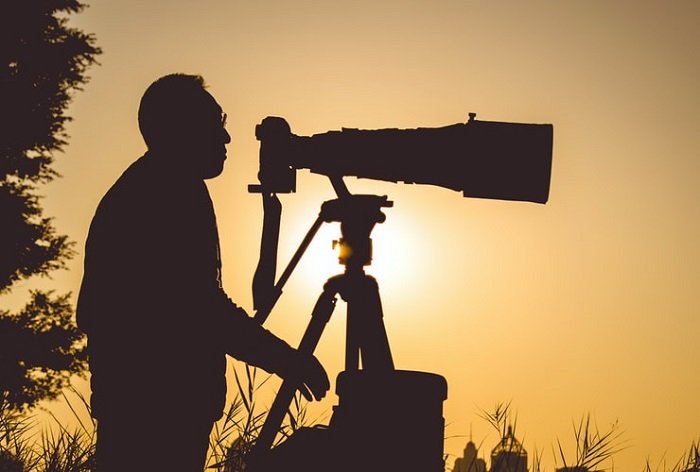Did you know that hummingbirds got their names from the humming sound their wings make? It is because they flap very fast. This fast movement is one of the things that makes photographing hummingbirds difficult.
In this article, we have collected 8 tips to take great hummingbird photography shots.
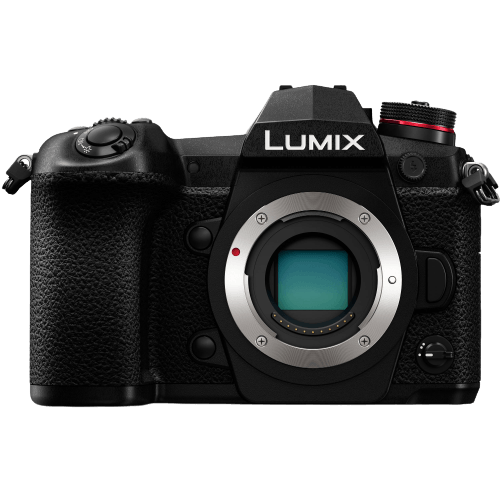
1. Hummingbird Photography: Where Do You Find Hummingbirds?
Hummingbirds live all across the American continent. They are migratory birds and fly to warmer areas in winter. But they do not ever leave the continent.
The first step is to research what species live near you and when they migrate. They are most common in Central and South America, but you can also find them in Canada and Alaska.
Lucky for photographers, hummingbirds eat a lot. Thanks to this, you can frequently find them around flowers.
You can meet hummingbirds throughout the day. But they are the most active around dawn and then later at dusk.
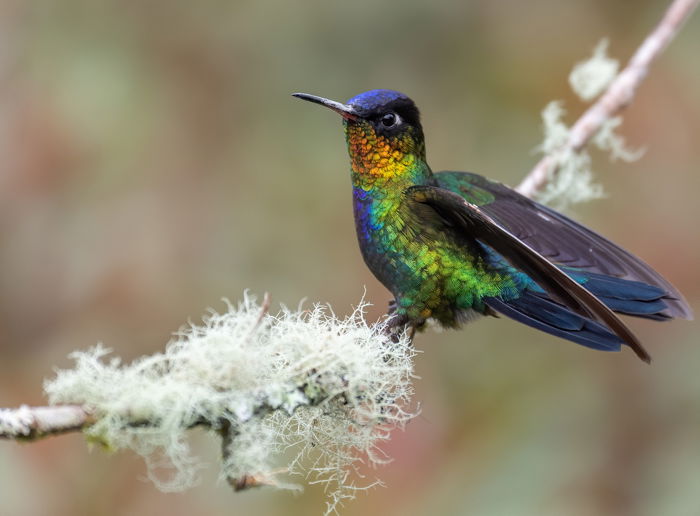
2. How to Attract a Hummingbird
As they fly fast, it is going to difficult to take good photos of them. But if you know how to attract them to your garden, it will be easier.
It is no coincidence that in most images, you see hummingbirds around flowers. They are pollinators, so having flowers in your garden will increase your chances of a visit. It is their great color vision that helps find flowers. Different species prefer different colors, but you cannot go wrong with orange, yellow, or red.
Another great attraction is a hummingbird feeder. Choose one that is red or orange. But do not use any paint to color the nectar itself! It may harm the birds.
Fill up the feeder with a refresher, which is 3/4 water and 1/4 sugar.
It is important that once you put out a feeder, you must clean it regularly. Otherwise, hummingbirds can get infected with different kinds of bacteria.
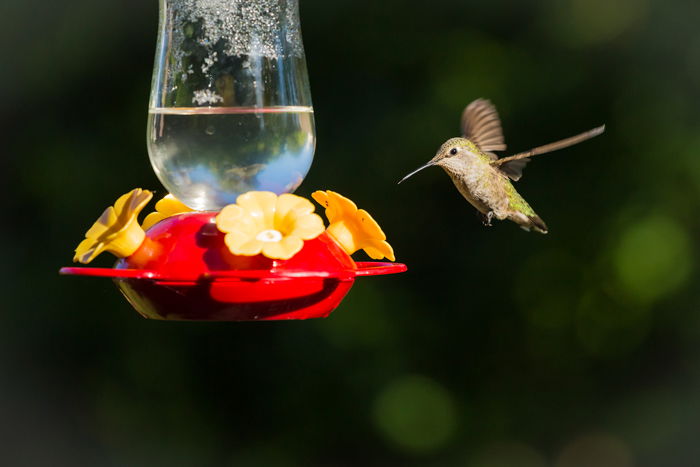
3. What Kind of Camera Do You Need to Photograph Hummingbirds?
Wildlife and bird photography are challenging genres. On top of the speed, hummingbirds are tiny. This makes them hard to spot and even harder to photograph.
Any camera compatible with wildlife photography will do the job. One choice we can recommend the Panasonic G9.
When choosing a camera for hummingbird photography, the most important features are frames per second and autofocus.
The more frames per second, the better. Choose a camera with a good frame rate, ideally over 11 fps.
Fast continuous autofocus is also going to be of help. You can also look for tracking mode when choosing the focus selection.
Use a camera that can handle low light situations and has high ISO. An ISO invariant camera is a great choice if you want to shoot with high shutter speed.
A crop sensor is going to increase the magnification of your telephoto lenses. With APS-C cameras, you can increase your equivalent focal length by a 1.6x crop, while Micro Four Thirds alternatives have a 2x crop factor.
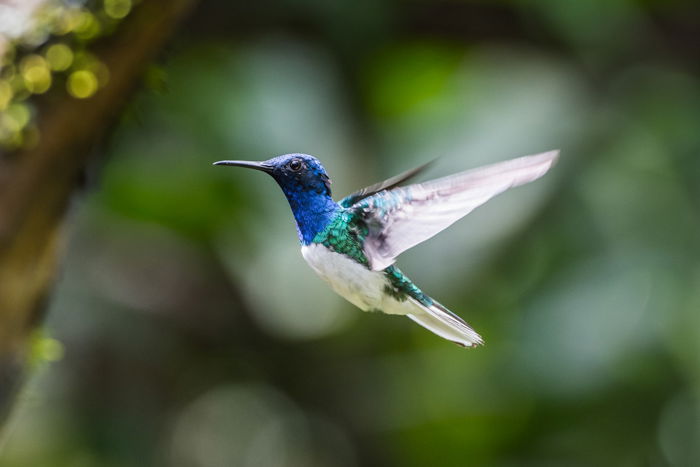
4. What is the Best Lens For Hummingbird Photography?
As you will not get close enough to your subjects, you will need a telephoto or a super-telephoto lens. As an alternative, you can also stack up extension tubes to increase focal length.
Note that your lens aperture has to keep up with a fast shutter speed. This is necessary for good image quality. The wider the maximum aperture is, the better, as it can let in more light.
Pay attention to the quality of the glass rather than the focal length. And let’s not forget that you need lens image stabilization to avoid taking blurry photos.
If you have a good lens, you can get away with a cheaper crop sensor camera. This does not work the other way around. A high-end camera with a cheaper lens cannot reach the image quality of the camera body.
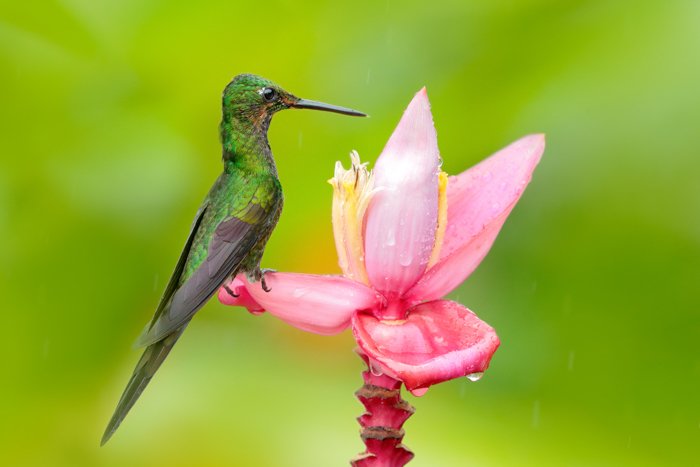
5. Freeze Motion With Flash
If you want to use flash, you will need more set up. One will not be enough to illuminate the birds, and you will need to brighten the background too.
Flash makes the birds’ feathers sparkle, which is a nice touch to your shots.
There are two things to bear in mind when using flash to photograph hummingbirds.
First, you are going to be far from the subject and use a telephoto lens. Like this, you cannot predict where to put the flashes unless you use them on your hot shoe. This is why flash works better when you have a bird feeder. It is more predictable than having many flowers around and hoping they will fly to the one you are watching.
Second, you can easily distract hummingbirds with artificial lights. Never use flash or any other artificial light for bird photography at night. You might get stunning images, but it can blind the birds temporarily. This is going to make them easy preys for predators.
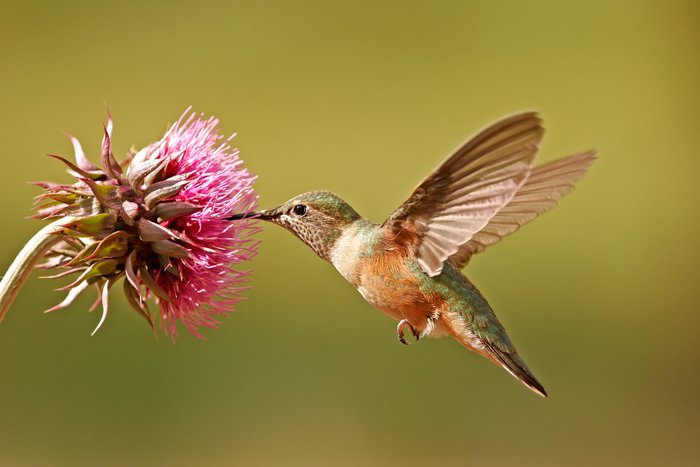
6. Photographing Hummingbirds Without Flash
We suggest you shoot in bright lighting conditions and use manual mode.
You will need a fast shutter speed as these birds beat their wings up to 80 times per second. It would be best if you used at least 1/2500. Under good light conditions, you can go even higher. The tiny wings are going to be blurred if the shutter speed is too slow.
If you would like to photograph hummingbirds with their wings blurred, you still need a relatively fast shutter speed. The wings will disappear otherwise.
Use the widest aperture you can. This way, you can compensate for the fast shutter speed that lets only a small amount of light to the sensor. Lenses will produce sharper images when the aperture is not wide open. If you have enough light, you can step back by 1 or 2 f-stops.
The third important setting is the ISO. I recommend you use a high ISO. This will compensate for the shutter speed limiting the amount of light. But be careful because a high ISO can cause digital noise.
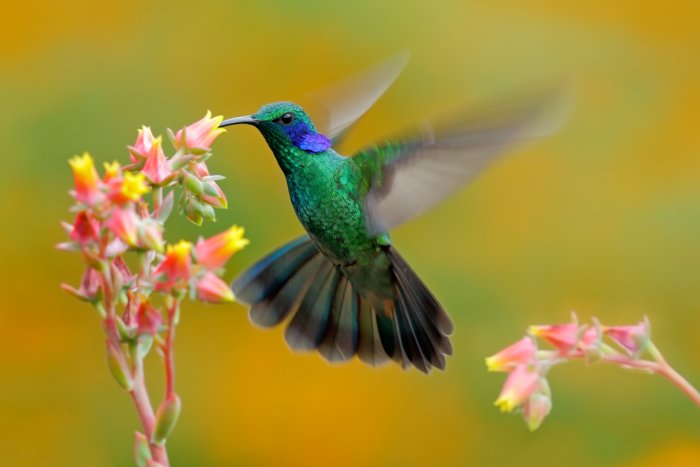
7. Stabilize Your Images
When using telephoto lenses, you will almost always need a tripod. Due to the long focal length, your telephoto lens is more sensitive to little movements and shaking.
You usually will have to wait a long time before a hummingbird appears in your frame. Believe me, you do not want to hold your camera in your hands this whole time.
Make sure to use a sturdy tripod. These lenses and cameras can be hefty.
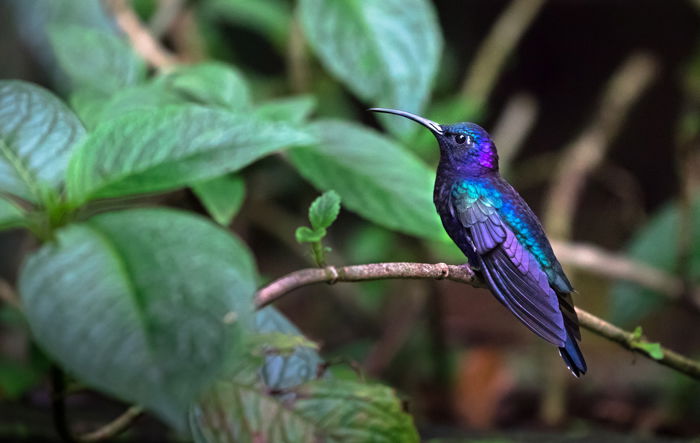
8. Enhance Your Shots in Post
You will take your best shots using fast shutter speed, small aperture, and low ISO.
These settings can result in underexposed images. To bring the details out of the darker areas, you should shoot in RAW.
By brightening the shadows, sharpening and saturating your images, you can bring out the hummingbirds’ colors. You can get stunning results even from non-flash photos if you tweak the colors in editing software.
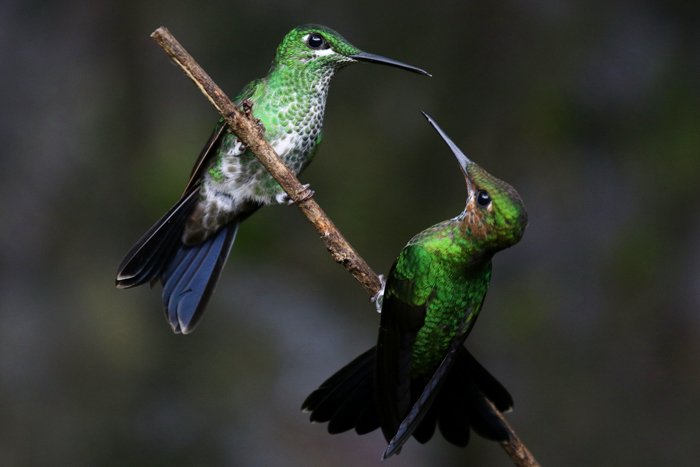
Conclusion
You do not need special equipment you would not need for other kinds of wildlife or bird photography. But to photograph hummingbirds, you need to pay attention to their behaviour and uniqueness.
When shooting any wildlife, always keep in mind the ethics of wildlife photography and bird photography. If you are using a feeder, please do not abandon it. Clean it regularly.
Taking pictures of hummingbirds requires some technical knowledge and patience. Follow our tips for stunning results.
Capture breathtaking photos of more wild animals with our Wonderful Wildlife course!
